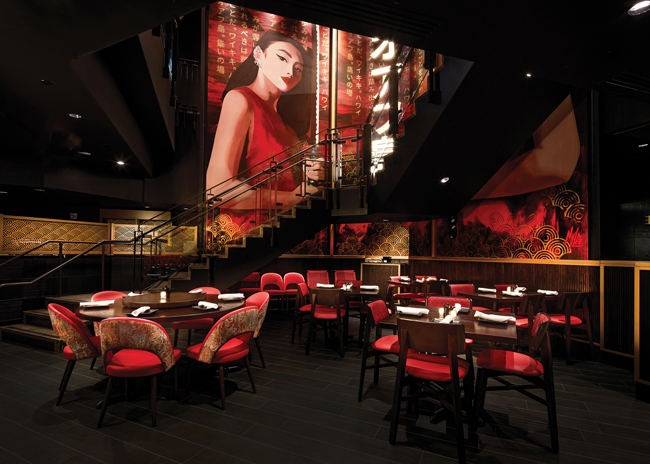This year Krispy Kreme will open in New York’s Times Square. The new 4,500-square-foot flagship location will include an element of theater, with doughnuts made in view of customers and stadium-style seating to accommodate them.
Last year, McDonald’s opened a flashy three-story flagship, also in Times Square. The 11,000-square-foot location offers spectacular views of the neighborhood through floor-to-ceiling glass walls, and specialty food items, too.
Many restaurant chains opt to have a flagship location, and many choose to do so in a location that helps spotlight their brand. But what makes for a good flagship restaurant and what are pitfalls to avoid?
The main goal of a flagship location is to introduce a new aesthetic shift for the brand and/or to create a big presence in a specific marketplace or destination. Below are some best practices to keep in mind when designing a restaurant’s flagship location.
1. Think carefully about where your flagship will be located.
The location has everything to do with the character of the restaurant. Public facing, large restaurants will likely benefit from the exposure. A restaurant group that emphasizes intimacy and farm-to-table ingredients may be better served by deliberate understatement.
2. Design a flagship restaurant location to stand out but also to embody the brand.
There needs to be a strong balance between the two. If a restaurant group has a distinct brand, every location – flagship or not – must convey to the public something that’s genuinely core to its identity. The flagship is differentiated only in so far as it puts more emphasis on announcing this to the public. As such, it must be impactful. But the differentiation does not contradict the brand; it celebrates it. Often the scale is larger, transparency is heightened, or a unique feature – perhaps a retractable roof – serves like an exclamation mark on a familiar phrase.
For example, when Assembledge+ developed the interior design for
Cactus Café’s flagship in Vancouver, B.C., in 2013, custom wood ceiling joists were incorporated throughout, echoing the mountains beyond and reflecting the terraced seating below, making this location understated yet standout.
 Images courtesy of Michael Elkan
Images courtesy of Michael Elkan
3. A flagship should draw in new and existing customers.
A brand can be related to the product in two ways. In most cases, the brand serves primarily as a certification of quality. In this case, the flagship is a kind of celebration. It must confidently express the restaurant’s character.
In the second sense, the brand is itself also the product. To some extent, it may also be the case for a theme restaurant.
Many designers give too much emphasis to the brand as product because it lends itself to more expressive work — even at the expense of the customer experience. But customer experience is almost everything for restaurants. Therefore, in our experience, the job of the flagship is primarily to send out an invitation to both new and existing customers and then to get out of the way.

4. Make it a testing ground for small changes.
Flagship locations, both because of expectations and special investment, lend themselves to experimentation with material palettes and construction techniques. But special attention should be given to scale or this may become an accidental area of experimentation. Typically, flagship locations will be substantially larger than the other restaurants. The design must carefully address this to assure the desired character is protected.
At the same time, the core values of the brand’s design philosophy should never be lost. All the new elements should elevate the original ideas and take them to the next level.
5. Play it safe but be more extravagant.
Even if a flagship location represents a new aesthetic chapter for a brand, the core values of its original design philosophy — which have made the brand successful to date — should be incorporated and seamlessly blended into the new mandate for the goals of the flagship location.
At the same time, while costs are always important, sometimes they’ll become less of a priority in order to create a design that provides the impact necessary to help establish a foothold in the new marketplace.
 Images courtesy of Michael Elkan
Images courtesy of Michael Elkan





